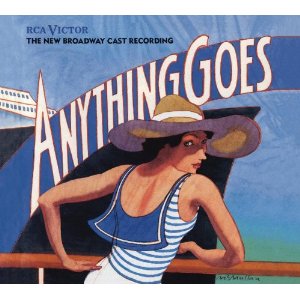SITE GUIDE
SEARCH
REVIEWS
REVIEW ARCHIVES
ADVERTISING AT CURTAINUP
FEATURES
NEWS
Etcetera and
Short Term Listings
LISTINGS
Broadway
Off-Broadway
NYC Restaurants
BOOKS and CDs
OTHER PLACES
Berkshires
London
California
New Jersey
DC
Philadelphia
Elsewhere
QUOTES
TKTS
PLAYWRIGHTS' ALBUMS
LETTERS TO EDITOR
FILM
LINKS
MISCELLANEOUS
Free Updates
Masthead
A CurtainUp Review
Burning
By Elyse Sommer
|
One man plays are really boring, and we have to do everything we can to prevent the audience from falling asleep. So, I'm thinking about having Jack perform the entire play in the nude. — Noah, a producer, about a play that started of with five actors but was cut down to a solo to save money and to be more of a showcase for the actor whose lover is producing it.
|

Barrett Doss and Stephen Tyrone Williams
(Photo credit: Monique Carbon) |
Despite Burning's large cast making it unnecessary to keep solo show weary audiences awake with Nature's Own costuming, not to mention Scott Elliott's handsome and fluidly directed production, Bradshaw hasn't ditched his fictional producer's idea of nudity as an attention-holding device. In fact, at one point or another two thirds of the actors get naked — and I don't mean for a quick flash-by glimpse. Not only that, the nude scenes cover just about every type of sexual congress imaginable. This probably won't shock theater goers who have followed Bradshaw's downtown career and applauded him as a fearless provocateur, but it's not likely to gain him a large new fan base among those who prefer a play that rolls its plot and themes to a satisfying climax in preference to watching an excess of couplings capped by moaning and groaning orgasms.
To be fair to Mr. Bradshaw, Burning is not without merit. Plays and films in which intersecting story lines bring seemingly unconnected characters together can be fun and absorbing to watch. The film Crash is a well known and well received case in point. Burning too has its moments, thanks to some amusing dialogue, Scott Elliott's fluid direction, Peter Kaczorowski's apt lighting of Derek McLane's scenery and Wendall K. Harrington's projections.
The script adeptly uses a number of funerals as a connecting thread that gathers together family members to collect urns holding parents' and lovers remains and deliver eulogies — and it does so over a decade spanning period, from 1983 to 2011. The play is structured around three main threads.
The 1980s segment spans three years, from 1983 and 1986. It focuses on a theatrical couple, Jack, an actor (Andrew Garman), Simon (Danny Mastrogiorgio), a producer. Jack and Simon's scenes cover their professional life and friends and how they become Uncle Jack and Dad to Chris, an ambitious but untalented aspiring actor who's also gay (Evan Johnson as the young Chris during the 1980s segments, and Hunter Foster as the older Chris in 2011).
The 2011 stories involve Peter (Stephen Tyrone Williams), a painter whose trip to Germany for an exhibit results in life changing consequences of his not revealing his racial identity to the press and his marriage to a white woman. Another segment with close connections to Peter's story involves Michael (Drew Hildebrand) a frustrated Neo-Nazi and Katrin (Reyna de Courcy) and his crippled sister who also have loved ones to mourn. Their story, besides including one of the most distasteful sex scenes also tries to milk constipation and flatulence for humor.
The way all these characters are interconnected is not always totally believable, but it's easy enough to follow. What's less easy to comprehend is just what lasting, fresh insights Mr. Bradshaw thinks he is leaving us with. What the press materials describe as "searing and graphic tales of self-invention and sexual identity" and an attack on "the pretenses of the worlds of art and theater" too often comes off too self-consciously ironic and in your face. The digs at the theater are funny but not exactly brand new. An amusing scene when Peter, the painter, his wife Josephine (Larisa Polonsky) and cousin Franklin (Vladimir Versailles) prepare for a funeral actually adds enother bit of societal finger pointing but then Jessica Mitford did that back in 1963 with her book The American Way of Death., which was published in 1963. I suppose if you spend a lot of time mulling over the playwright's intent, you may even find a larger theme pertaining to the inter-racial connectons in all these less than persuasive plot lines.
The actors do their best whether dressed or in flagrante delicto. One can't help wondering what attracted Hunter Foster, an actor with a number of high profile Broadway credits under his belt, to a bare-your-butt ensemble role like this. At any rate, neither Hunter or any of the other actors caught up in this overabundance of explicit and endlessly drawn out sex scenes, can make the experience of watching them titillating. (At the performance I attended, quite a few people, mostly young women, obviously found these scenes laugh out loud funny).
Venus in Fur which opened on Broadway just a week before Burning, creates more provocative sexual sizzle In just 95 minutes with just two actors. No nudity. No actual sexual intercourse. A sex scene in another recently opened show, the musical The Blue Flower has the fully clothed participants finish things off totally of the viewers' range but which is nevertheless truly sensual. If Bradshaw had applied the less-is-more maxim to his carnal illustratons, or Mr. Elliott had not allowed them to be so interminably (and, truth be known, boringly) drawn out, Burning might have caused, at least this viewer, not to be burning for a more quickly arrived at ending.
Other Bradshaw plays reviewed at Curtainup:
The Bereaved-2009
Dawn -2008
New York Living one of 6 short plays in The Great Recession-2009
|
Burning Written by Thomas Bradshaw Directed by Scott Elliott Cast: Jeff Biehl (Paul, Heinz, Priest, Funeral Director), Reyna de Courcy (Katrin), Barrett Doss (Gretchen), Hunter Foster (Older Chris), Andrew Garman (Jack), Drew Hildebrand (Michael), Evan Johnson (Chris), Danny Mastrogiorgio (Simon), Andrew Polk (Noah), Larisa Polonsky (Josephine), Adam Trese (Donald), Vladimir Versailles (Franklin), Stephen Tyrone Williams (Peter) Set Design: Derek McLane Lighting Design: Peter Kaczorowski Costume Design: Clint Ramos Sound Design: Bart Fasbender Video Design: Wendall Harrington Dialect Coach: Doug Paulson Stage Manager: Valerie A. Peterson Running Time: 2 hours and 45 minutes, including one intermission The New Group at the Acorn Theatre, 410 West 42nd Street From 10/26/11; opening ;11/14/11; closing 12/14/11 Reviewed by Elyse Sommer at November 9th press Performance. |
|
REVIEW FEEDBACK Highlight one of the responses below and click "copy" or"CTRL+C"
Paste the highlighted text into the subject line (CTRL+ V): Feel free to add detailed comments in the body of the email. . .also the names and emails of any friends to whom you'd like us to forward a copy of this review. Visit Curtainup's Blog Annex For a feed to reviews and features as they are posted add http://curtainupnewlinks.blogspot.com to your reader Curtainup at Facebook . . . Curtainup at Twitter Subscribe to our FREE email updates: E-mail: esommer@curtainup.comesommer@curtainup.com put SUBSCRIBE CURTAINUP EMAIL UPDATE in the subject line and your full name and email address in the body of the message. If you can spare a minute, tell us how you came to CurtainUp and from what part of the country. |
 Anything Goes Cast Recording
Anything Goes Cast RecordingOur review of the show
 Book of Mormon -CD
Book of Mormon -CDOur review of the show

Slings & Arrows-the complete set
You don't have to be a Shakespeare aficionado to love all 21 episodes of this hilarious and moving Canadian TV series about a fictional Shakespeare Company

